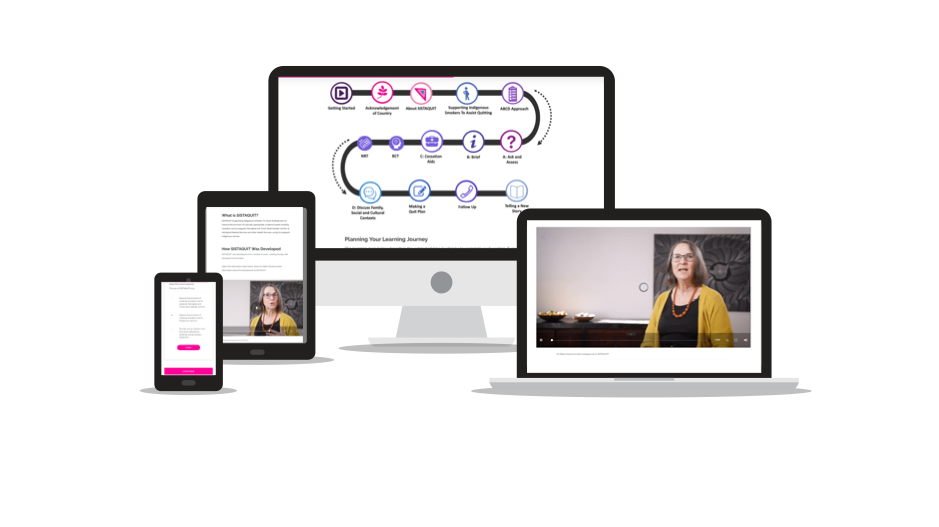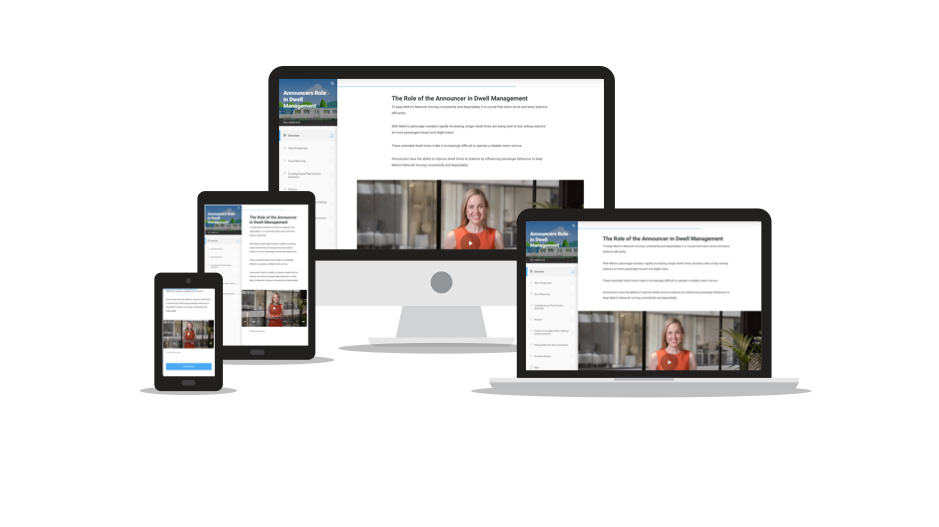The Learning Benefits of Video and Multimedia
The use of video and multimedia in teaching and learning has become commonplace. This is not surprising – given their evidence-based ability to enhance engagement, strengthen understanding of concepts and increase knowledge retention.
 eLearning example created by Instructional Design Australia incorporating training videos
eLearning example created by Instructional Design Australia incorporating training videos
You can learn more about how Instructional Design Australia can help your organisation create a training video here.
Benefits of video and multimedia in learning
1. Engagement
Nothing’s worse that going to a program, only to discover that they have forgotten to leave ‘chalk and talk’ in the 20th century. Multimedia – the use of text, art, sound, animation, and video – captures learner attention and maintains their interest in the subject matter.
2. Contextualises learning
Video and multimedia can be used to contextualise learning by providing real life examples of its application – building bridges between the classroom and the real world. Through this, participants realise the relevance of the content, and see value in the learning. It answers the ‘why’ and ‘what’s in it for me’ (WIIFM) questions. This in turn influences discretionary effort, intrinsic motivation and a willingness to learn.
3. Deeper Understanding
Multimedia can offer diverse perspectives on the subject matter, stimulate discussion, analyse case studies and challenge existing ideas/perceptions. This construction and reconstruction of concepts helps to enhance and refine how learners ‘make sense’ of new information.
4. Caters for visual learners
“People learn better from words and pictures than from words alone” [1]. Learners benefit from a combination of multimedia elements that can easily cater for diverse learning styles. The brain integrates pictorial and verbal knowledge constructions with relevant prior knowledge, aiding knowledge transfer to memory.

eLearning example created by Instructional Design Australia incorporating training videos
Incorporating video and multimedia in learning
Rapid developments in technology and the abundant media resources easily accessible with the click of a button makes multimedia seem like an effortless method of content delivery.
Despite this, video and multimedia should not be incorporated without thought and design.
It’s not enough to simply add a video to a program and expect astounding improvement. Applying instructional design to the delivery of concepts is key to ensuring that a program hits the mark.
Video and multimedia must be integrated in a way that not only reinforces content, but also enriches learners’ understanding of concepts. You can stimulate learner thinking and curiosity prior to watching a video or engaging with multimedia by presenting prompting questions for learners to investigate, reflect on – or even tasks for them to complete.
They are then primed to unpack concepts in a way that aligns with the learning objectives. You can stimulate higher order thinking after introducing the resource by debating or critiquing ideas and concepts, or by comparing and synthesising information from a variety of sources.
Multimedia is an efficient and effective learning aid that, with careful design, connects written, audio and visual representations of content/concepts to enable ‘sense-making’ and enhance learning.
Example of training video created by Instructional Design Australia.
Learn more about training videos here.
Contact Us
Discover Learning Designs (DLD) and Instructional Design Australia (IDA) provides instructional design services to support workplace learning and change. With team members in Melbourne, Sydney, Brisbane and Perth DLD will enable your people to engage, learn and perform. Call us on 1300 528 736 or make an online enquiry.
[1] Mayer, RE 2001. Multimedia learning. Cambridge: Cambridge University Press
